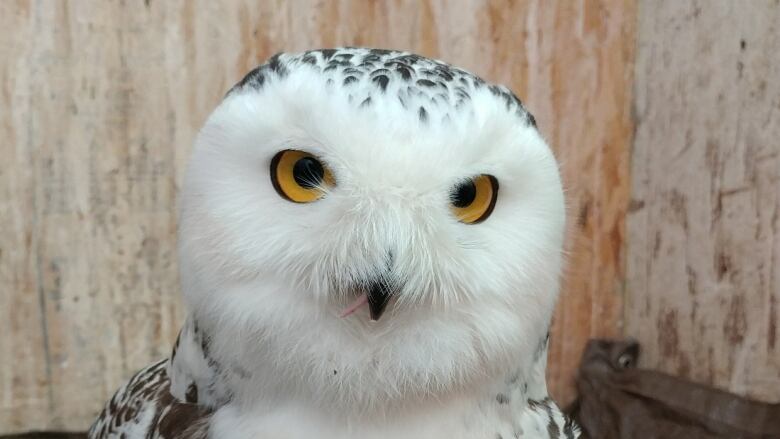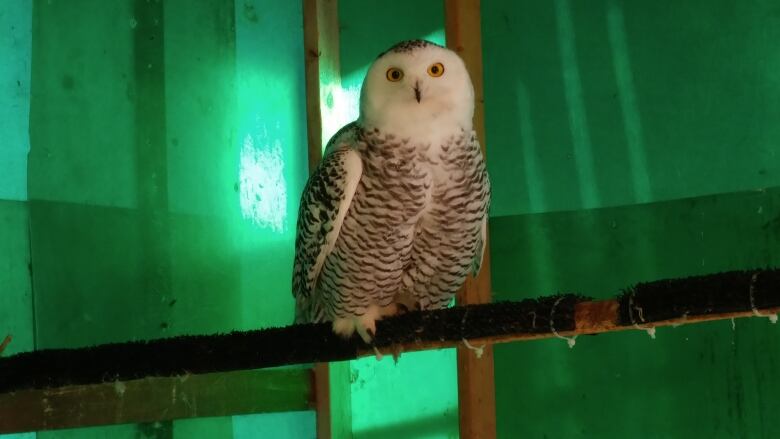Number of injured snowy owls soars at Manitoba wildlife refuge
Wildlife Haven Rehabilitation Centre took in 16 snowy owls by end of December; most winters they get a few

The snow has been on the ground less than two months in southern Manitoba, and already a local wildlife refuge says it's taken in more snowy owls than most years and the majority had to be put down.
"Really disappointing that we had to do that," said Tiffany Lui,animal careco-ordinatorat theWildlife Haven Rehabilitation Centre.
Staff took in 16 snowy owls late this fall and into December. Most years the refuge only takes in a couple of the predatory birds that become grounded due to starvation or injury,Lui said.
"Definitely if there is a higher population of the snowy owls up north, we'll see more come down south," said Lui.
This winter could unfortunately be a banner year for snowy owl intakes at the refuge. In 2015, they took in 22 snowy owls, the highest total in at least five years.
A Manitoba Sustainable Development spokesperson said though lemming populations appear to be high in the north this year,snowy owl numbers in the south of the province are roughly on par with past years.
On the other hand, parts of eastern Canada and the Midwest U.S. have noticed an irruption of the pale birds.
But the birds are ending up at the refuge for a different reason this year.
Snowy owls are born and bred in the northernreaches of Canada. They learn to hunt smallmammals, mainly lemmings, on the tundra, in fields and along the fringes of treelines.
But in years where the lemming population booms, so too does that of the snowy owl. That increases competition between mature individuals who are seasoned hunters and inexperienced youngsters, many of which opt to head further south in the winter in search of less crowded territory.

The majority of the 22 owls brought into the refuge in 2015 were juveniles that came in weak and emaciated. The promise of less competition was diminished by a lack of familiarity with hunting in southerly habitats.
Many of those were fattened up and set free, but the majority of the16 snowy owls received this year were found near roads with serious wing injuries andhad to be euthanized, Lui said.
"I'm not sure myself why we're seeing so many come in hit by cars," she said.
"Maybe it's because they're trying to get an opportunity, there might be food on the side of the road that [was] hit and they go for that, and it becomes a secondary problem because a car drives, they try to fly away, they get hit.
"I'm not 100 per cent sure why it's happening this way. It's kind of sad."
Anyone who comes across injured wildlife can call theWildlife Haven Rehabilitation Centre or Manitoba Sustainable Development.













_(720p).jpg)


 OFFICIAL HD MUSIC VIDEO.jpg)
.jpg)



























































































